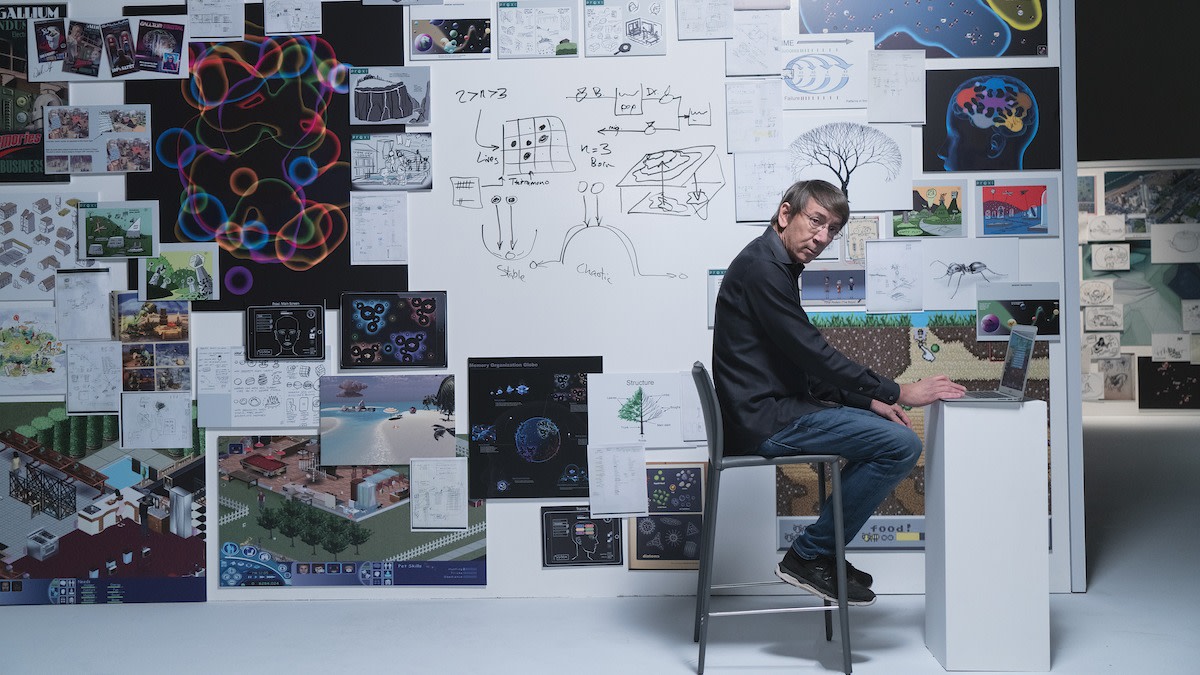Will Wright Shares 5 Tips for Creating Video Game Art
Written by MasterClass
Last updated: Jun 7, 2021 • 3 min read
Visual style reflects the language of your game and is about more than realism or fidelity. Your visual aesthetic helps define your game language and should impact your design in a meaningful, creative way that contributes to a positive user experience for gamers.
Learn From the Best
Common Terms for Video Game Graphics
Game design has its own extensive terminology. Here are some basic terms that every game designer should know:
- Pixel: A pixel is an illuminated, colored square that produces images on a digital display.
- Pixel art: Pixel art is a 2D visual style that uses pixels to render and animate the characters and environments within a game. Pixel art styles often reference early video game aesthetics popularized by consoles such as Atari, Nintendo Entertainment System (NES), Super Nintendo Entertainment System (SNES), and Sega Genesis.
- Low-poly: Low-poly is a 3D visual style based on the simple, blocky shapes produced by meshes with a low polygon count. Low-poly styles are less graphically demanding and more stylized than their high-poly counterparts. The low-poly style is seen in retro titles, like Mario or The Legend of Zelda franchise, and nearly every arcade game.
- High-poly: High-poly is a 3D visual style, common in high-quality animation, that uses high-polygon meshes to produce realistic, complex shapes and structures. High-poly styles are graphically demanding and tend to achieve a sense of realism. High-poly is used in most triple-A (AAA) titles, games that emulate the real world (like simulators or virtual reality), and even certain smartphone games.
Will Wright’s 5 Tips for Creating Video Game Art
Video game art styles come in many forms, depending on the type of video game and gaming system. Before game development starts, it is important to study and experiment with different game visuals to figure out which one works best for your concept. Here are tips for creating a visual style from gaming pioneer Will Wright:
- 1. Have a general idea. To create art for your video game, you’ll need to think about your game’s overall aesthetic. Does your game feature 2D or 3D graphics? Will you use a low-poly or high-poly style? What feelings and emotions will the visual style evoke in the player? How will it influence their gameplay?
- 2. Use research to discover your aesthetic. Discover the visual aesthetic of your game during the research phase of the design process. Don’t limit your research to video games: look into other forms of art and material cultures throughout history. In his research for Spore, Will gathered hundreds of pulp sci-fi comic books from the 1960s for visual inspiration. Use a similarly broad, research-based approach to find a visual aesthetic for your own game.
- 3. Study concept art. Study concept art from your favorite games to see how early visual designs eventually translate into game objects. Draw these yourself, or work with your artist to produce sketches of characters, environments, and enemies that will eventually appear in your game.
- 4. Create a like-minded team. When looking for artistic collaborators, seek out people who understand your vision as a designer, but who can also produce work you can’t. If you have a very particular style in mind (pixel art, for example) find someone who specializes in that style. If not, you should find a generalist who can help you ideate and develop the visual style of the game as it progresses through various design stages.
- 5. Focus on the look. Use bold color choices and shallow depths of field to highlight game nouns. Consider how certain animation choices influence the feel of your game verbs. Don’t underestimate the extent to which visual choices can influence the psychology and guide the behavior of your players. The look of your game should direct particular kinds of player behaviors while discouraging others.
Learn More
Get the MasterClass Annual Membership for exclusive access to video lessons taught by masters, including Will Wright, Paul Krugman, Stephen Curry, Annie Leibovitz, and more.
